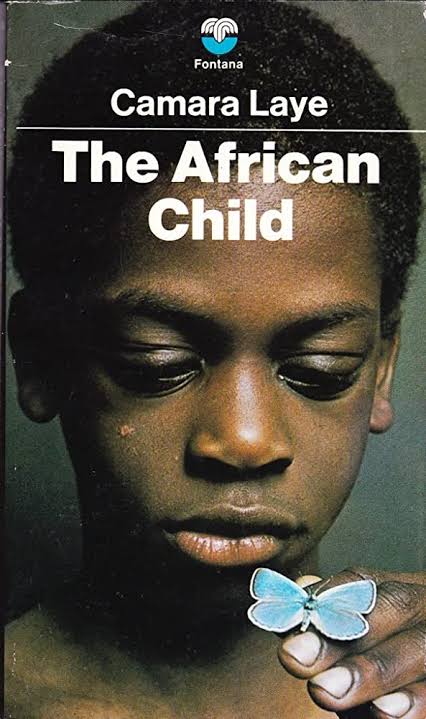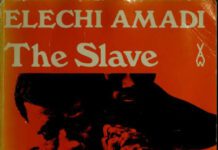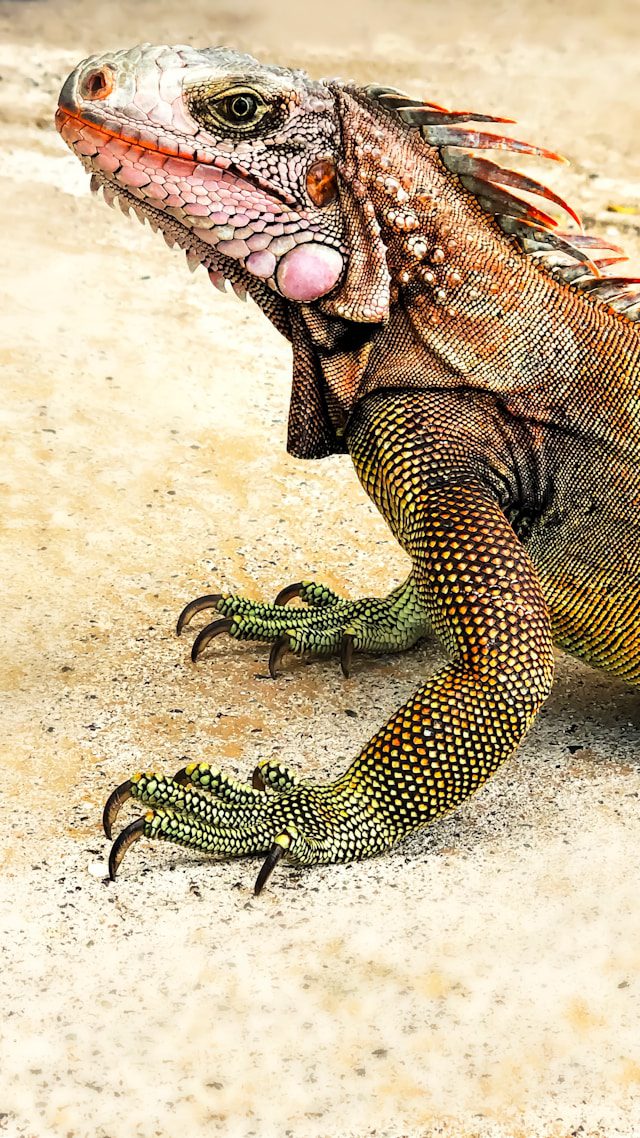Chapter Seven Summary
In chapter seven of The African Child, Laye recounts the first stage of his initiation into manhood in the company of other uninitiated young boys like him between the age twelve to fourteen. They are led away from their respective compounds by their elders referred to as the big “Kondens.” The initiation begins at dusk when Kodoke, a skilled drummer, beats the drum to gather the prospective initiates.
Laye’s father attempts to ease Laye’s fears about the initiation, emphasizing the importance of self-control and bravery. However, the multitude of frightening myths surrounding Konden Diara makes Laye apprehensive.
Each prospective initiate carries a “coro,” a small drum-like instrument, and they are accompanied by dancing girls and women from their compounds. Young men join the circle, singing and dancing while the uncircumcised boys, like Laye, sing together, momentarily forgetting their anxiety.
The tour through the town continues until the middle of the night when the women, grown men, and young girls leave the uncircumcised boys with the older initiates, who conduct the secret aspect of the ceremony.
The sacred initiation spot is under an enormous bombax tree at the confluence of the Komoni and Niger rivers. As the initiates enter the bush in silence, they are ordered to close their eyes.
Suddenly, Konden Diara’s roaring begins, sounding like a chorus of wild lions, evoking terror among the boys. The author switches to the present tense to convey the intensity of their fear.
The roaring abruptly ceases, and the initiates are instructed to stand up, relieving their fear. They then sit by the fire as the initiation proper commences, involving lessons and songs taught by the elders throughout the night.
At dawn, weary but initiated, the boys return to town, singing their new songs with abandon. Laye likens them to horses speeding toward the stable, eager to complete their journey.
The chapter also introduces the mystery of long white threads hanging from the bombax tree, serving as directional markers. Laye explains that these threads are made of cotton and tied to bamboo rods hidden away to maintain the secret of Konden Diara.
Laye concludes that the lion ceremony serves as a test and training in hardship, a tribal rite prelude to circumcision.
The ceremony represents a crucial step in a young boy’s journey towards manhood, reflecting the traditions of an African society. It serves as a test of bravery and resilience. The experience during the night of Konden Diara is deeply memorable for Camara Laye and serves as vital preparation for the upcoming circumcision ceremony.
Read: Chapter One to Chapter Six Summary of “The African Child”
Chapter Eight Summary
By this point, Laye is in his final year of scholarship. He is now around fourteen years old and undergoes circumcision, a process that has been slightly delayed compared to most of his companions.
The circumcision rites involve both public ceremonies and secret rituals. Unlike the initiation ceremony, the public aspect is a grand celebration lasting several days, with a week-long circumcision dance known as the “soli.”
During the soli dance, the boys to be circumcised wear distinctive costumes, including a cap and a long boubou, signifying their upcoming transformation. Brightly colored silk handkerchiefs from their acknowledged sweethearts are worn around their loins, symbolizing innocent friendships.
The public ceremony is marked by gifts from family and friends, including some humorous moments as relatives join the dance.
The climax of the circumcision rites is the “coba” dance, which occurs on the eve of the circumcision. The boys, dressed in modified attire, dance under the chant of “Cobal Aye coba, lama!”
This final dance is all-night and marks the culmination of the public celebrations.
After the coba dance, the boys proceed to a hidden location in the bush for the actual circumcision, performed rapidly by an experienced operator.
Once circumcised, guns are fired to announce their manhood, and the boys undergo treatment and bandaging by a healer called the “sema.”
A period of convalescence follows, lasting at least four weeks, during which mothers and women are not allowed contact with the boys.
Upon recovery, the boys are reunited with their families and receive a warm welcome, marking their transition into adulthood. Laye is given his own separate hut and a set of men’s clothes.
The circumcision rites are a transformative experience for Laye, signifying his transition from childhood to adulthood in his society.
The circumcision is undoubtedly the most significant event in Laye’s childhood recollections. It stands in stark contrast to the night of Konden Diara, as it involves real danger and pain, marking the final step towards manhood.
This process keeps Laye away from home for an extended period, creating an emotional strain in his relationship with his mother. It also signifies the beginning of their physical separation. The circumcision serves as preparation for his departure from home as a man, pursuing an educational career. His assignment to a separate hut from his mother’s symbolizes his growing independence and eventual separation from his parents.
Read: Plot Summary of Camara Laye’s “The African Child”
Chapter Nine Summary
In chapter nine of the novel, Laye leaves home for Conakry. He embarks on a significant journey to Conakry at the age of fifteen, marking his second departure from his parents, but this time for an extended period.
Prior to his departure, Laye’s mother undertakes a tour of marabouts (medicine men) and makes sacrifices to secure her son’s future, considering his voyage akin to traveling to a savage land.
A grand feast is held in their compound on the eve of his departure, attended by marabouts, witch-doctors, friends, and notables from various classes, ensuring Laye carries their blessings with him.
The night before his journey is filled with private groans of anguish from his mother and restless sleep for Laye, leaving him pondering whether tears are an integral part of life’s experiences.
His mother presents him with a bottle of magic potion meant to enhance his brain, emphasizing its importance for his studies.
Laye’s father provides him with a he-goat’s horn containing protective talismans against evil spirits.
Their parting is marked by tears and a poignant farewell, as mother and son share a heart-wrenching moment before Laye’s departure.
Upon arriving in Conakry, Laye is struck by the breathtaking view of the city. He describes it as a shining flower on the sea, its beauty surpassing that of the sky.
He explores the city’s avenues, noticing the stark contrast between Conakry and Kouroussa. The straight, tree-lined avenues and intense heat leave a lasting impression on him
The most awe-inspiring aspect of Conakry for Laye is the sea, which captivates him with its vastness and the constant rolling of waves against red rocks along the shore.
Distant green islands on the horizon add to the spectacle, making it one of the most astonishing sights Laye has ever seen.
This chapter also delves into Laye’s experience at the Technical School in Conakry.
Initially, Laye is disappointed by the simplicity of the coursework at the Technical School, feeling as though he’s back in an infants’ class. He contemplates returning to Kouroussa but is persuaded to stay due to the practical training available.
Inflammation and a malignant ulcer on his feet result from standing in the school’s workshops. Laye is admitted to the hospital, where his aunts and uncles provide support during his recovery.
Laye’s uncles, particularly Uncle Mamadou, offer guidance and persuade him to stay at the Technical School. They are emphatic about the value of technical education over purely literary education.
He returns to school after his recovery and experiences significant improvements in the quality of education, as the school undergoes reorganization with new classrooms, teachers from France, and advanced general subjects.
Laye excels academically and secures a spot on the honour roll each term. His uncle is impressed with his excellence, dedication and achievements.
As he prepares for his proficiency certificate examination, Laye seeks divine assistance. He writes to his mother about consulting marabouts to ensure his success.
He ultimately excels in the examination, emerging as the top candidate among those who passed. This marks a significant achievement in his educational journey.
Chapter Nine of the novel is significant in a number of ways. It marks his emotional departure from home. It is also characterised by religious and superstitious influences. Laye’s mother’s magic potion and his father’s protective talismans symbolize the coexistence of Islamic and traditional beliefs in the society. Sacrifices to marabouts and ancestors reveal the community’s superstitious nature.
The chapter marks his transition to urban life. Laye’s shift from Kouroussa, a smaller town, to Conakry, a bustling city, reflects his exposure to different urban environments.
His journey to the Technical College in Conakry establishes him as a brilliant scholar. His initial reaction to lower academic standards highlights his pursuit of excellence and challenges adapting to a new educational environment.
Laye’s illness and recovery demonstrate his uncles’ and aunts’ love and support, making him feel at home in an unfamiliar city. His belief in the supernatural is evident in his request for his mother to consult marabouts.
In summary, Chapter Nine marks Laye’s transition to a new city, the exploration of his family’s history and beliefs, and the deepening of relationships, all against the backdrop of his educational pursuits and emotional growth.

Chapter Ten Summary
In Chapter Ten, Laye Meets Marie. This chapter describes Laye’s experiences and significant moments with Marie. It emphasizes the deepening friendship and connection between Laye and Marie.
During Laye’s second year in Conakry, he meets Marie, a student at the Girls’ High School, and their friendship gradually develops. Marie’s father had been friends with Laye’s Uncle Mamadou. Marie often spends Sundays at Laye’s uncle’s house.
Marie is described as a half-caste with a very light complexion and exceptional beauty. To Laye, she appears as beautiful as a fairy, leaving a lasting impression. Laye considers his friendship and experiences with Marie as the most significant part of his time in Conakry. Their connection holds immense value for him. Besides, Laye’s aunts, Aunt Awa and Aunt N’Gady, actively support the growing affection between Laye and Marie, even wishing for their engagement. They affectionately refer to Marie as ‘Mme Camara Number Three.’
Laye and Marie spend their Sundays together, often in Uncle Sekou’s apartment. They engage in innocent activities like dancing to gramophone records and studying mathematics. Riding Laye’s bicycle to the sea becomes their favourite pastime.
Laye goes on to describe their connection as deep and profound, characterized by love but without naming it as such. Their friendship is pure and cherished, residing within their hearts, and they are content with its unspoken nature. Laye’s connection with Marie emerges as a pivotal relationship in his life, second only to the bond he shares with his mother.
Read: Characterisation in Camara Laye’s “The African Child”
Chapter Eleven Summary
Chapter Eleven details the illness and death of Check Omar. Check Omar, much like Kouyate, had been Laye’s schoolmate during their primary education in Kouroussa. Kouyate and Check both possessed remarkable mathematical skills, while Laye excelled in French.
However, their genuine friendship truly blossomed after they left Kouroussa for further studies: Laye headed to Conakry, while Kouyate and Check pursued their education in the High Schools of Popoda and Dakar, respectively. During holidays, they reunited in Kouroussa as an inseparable trio.
Toward the end of their year away from Kouroussa, Check began to complain of feeling extremely fatigued. It soon became apparent that he was seriously ill. His mother consulted traditional medicine-men who recommended massages and infusions, but these treatments proved ineffective. Check’s stomach continued to swell, and his complexion turned grey. Strangely, Check displayed no signs of pain.
Eventually, Kouyate suggested that Check seek help from the white doctor at the dispensary, and Check agreed. His condition deteriorated rapidly. Check’s mother, his brothers, as well as the mothers of Laye and Kouyate, all stayed by his bedside throughout the week. As the week neared its end, Check’s condition became critical, and he began to dictate his final wishes to his friends, specifying how his books should be shared and who should receive his banjo. Tragically, as the dispensary clock struck twelve, he passed away.
The loss of Check Omar was a devastating blow for Kouyate and Laye. The memory of their dear friend haunted them for a long time afterwards.
In the novel, where most incidents are joyful, the death of Check Omar stands out as the singular tragic event. This sorrowful event surpasses the pain of mere farewells, as it represents a permanent separation. It leaves a profound scar in Laye’s youthful memories.
Read: Themes in Camara Laye’s “The African Child”
Chapter Twelve
Chapter Twelve marks Laye’s departure for Argenteuil in France for the continuation of his studies.
After Laye returns from Conakry with his proficiency certificate, he reveals the headmaster’s plan to send him to France, causing anxiety, particularly for his mother. When Laye’s father, who is more understanding, tries to console her by saying a year isn’t very long, she vehemently disagrees, refusing to accept her son’s departure.
Late that night, Laye has a private discussion with his father under the veranda about his departure plans. The headmaster requires formal consent from Laye’s father, and Laye mentions that Uncle Mamadou considers it a unique opportunity. Despite his own sadness, Laye’s father gives his consent, having sensed Laye’s eventual departure, possibly aided by the little black snake. He recalls a previous discussion about the snake, where he expressed his fears about Laye leaving for a greater school. Now, he resigns himself to this inevitability.
Laye’s father encourages him to seize the opportunity, emphasizing the importance of returning to their homeland after his studies. He expresses the need for individuals like Laye to contribute to the country.
Laye then informs his headmaster about his father’s approval, and arrangements are made for his departure. He is admitted to a school in Argenteuil, near Paris. However, obtaining his mother’s consent remains a challenge. Laye and his father find Laye’s mother while she’s crushing millet. There is an emotional outburst from Laye’s mother as she criticizes her son for leaving her and her husband as well. Eventually, her anger subsides, and she acknowledges her son’s inevitable departure.
Laye departs for France, and the parting is heart-wrenching, with memories of his mother’s wailing, his father’s tears, and the farewell to his siblings. He travels through Conakry, where the headmaster provides instructions for his journey to Argenteuil via Paris.
Laye travels to the airport in Conakry with Marie and his uncles. Marie accompanies him as far as Dakar, Senegal, to continue her studies. An emotional scene unfolds as the plane takes off, and he leaves the land of Guinea behind. Tearful goodbyes are exchanged with Marie in Dakar.
The concluding incident in the novel is undeniably the most poignant, highlighting the overarching theme of parting, which is central to the narrative. This incident underscores Laye’s deep emotional connection with his mother, who struggles to let him go. In contrast, his father displays greater insight and understanding.
This departure differs from Laye’s earlier one for Conakry, as he anticipates less frequent visits home. His journey to France is likely to result in his longest continuous separation from his mother. Laye’s final departure for France occurs when he is approximately nineteen years old. He had left for Conakry at the age of fifteen, spending four years .
Consequently, Camara Laye’s The African Child encompasses significant events in Laye’s life, ranging from his childhood at around five or six years old to his late adolescence at nineteen. The autobiography provides a comprehensive account of his formative years.
 WHATSAPP: Click HERE to join the new Literature PADI WhatsApp group to receive latest updates on your phone and for further literary discussions!
WHATSAPP: Click HERE to join the new Literature PADI WhatsApp group to receive latest updates on your phone and for further literary discussions!







